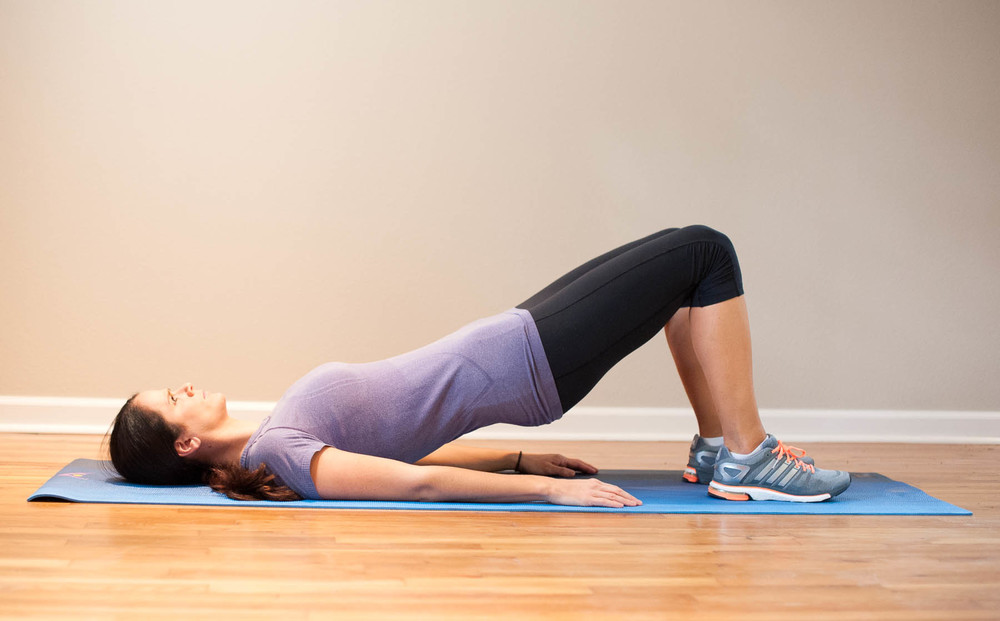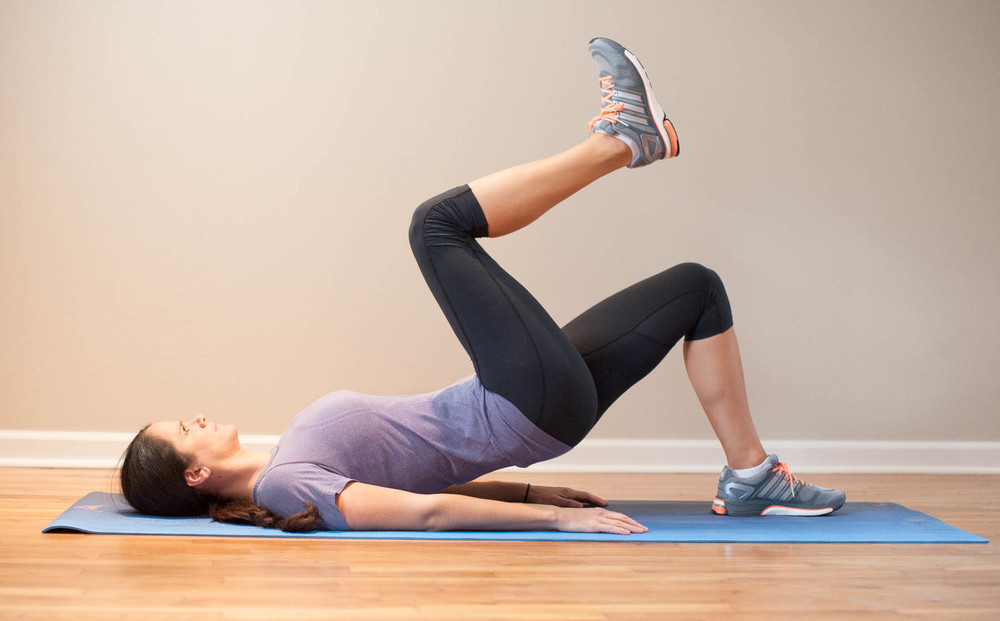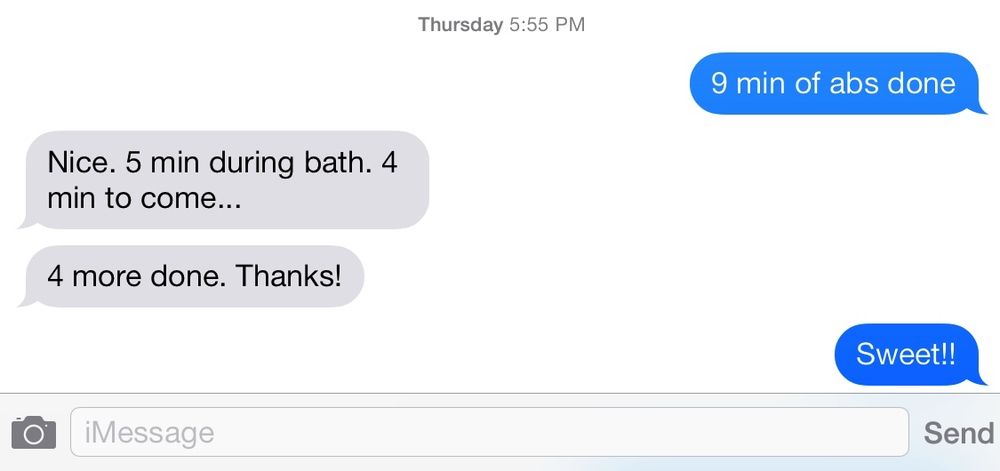by Meghan Reynolds
Ok, you might need more but this one move is great because it works so many muscles - your hips, glutes, hamstrings and core, with the added bonus of working your chest muscles. I like this move because it works multiple areas and is efficient.
Super Bridge Press
Begin laying on your back with a pair of 5-8 lb dumbbells in hands. Put both feet on a Bosu ball (or, use sofa cushions or stair step) and get in a bridge position. Keep your knees at 90 degrees, glutes engaged and shoulders on the ground. Lift your right leg straight up in the air as you perform a chest press. Keep you right leg straight up as you simultaneously do a bridge lift and a chest press (lift hips and straighten arms together, then lower). Repeat for 20 reps and switch sides.
Start Position
Lift your hips and arms together
I've been doing this move for the past week - 2 sets of 20 reps every other day and my hips and hamstrings are not as achy when I run. Do these first thing in the morning. I'll be sharing new moves every week - follow us on social media to see our recommended strength moves for runners.







